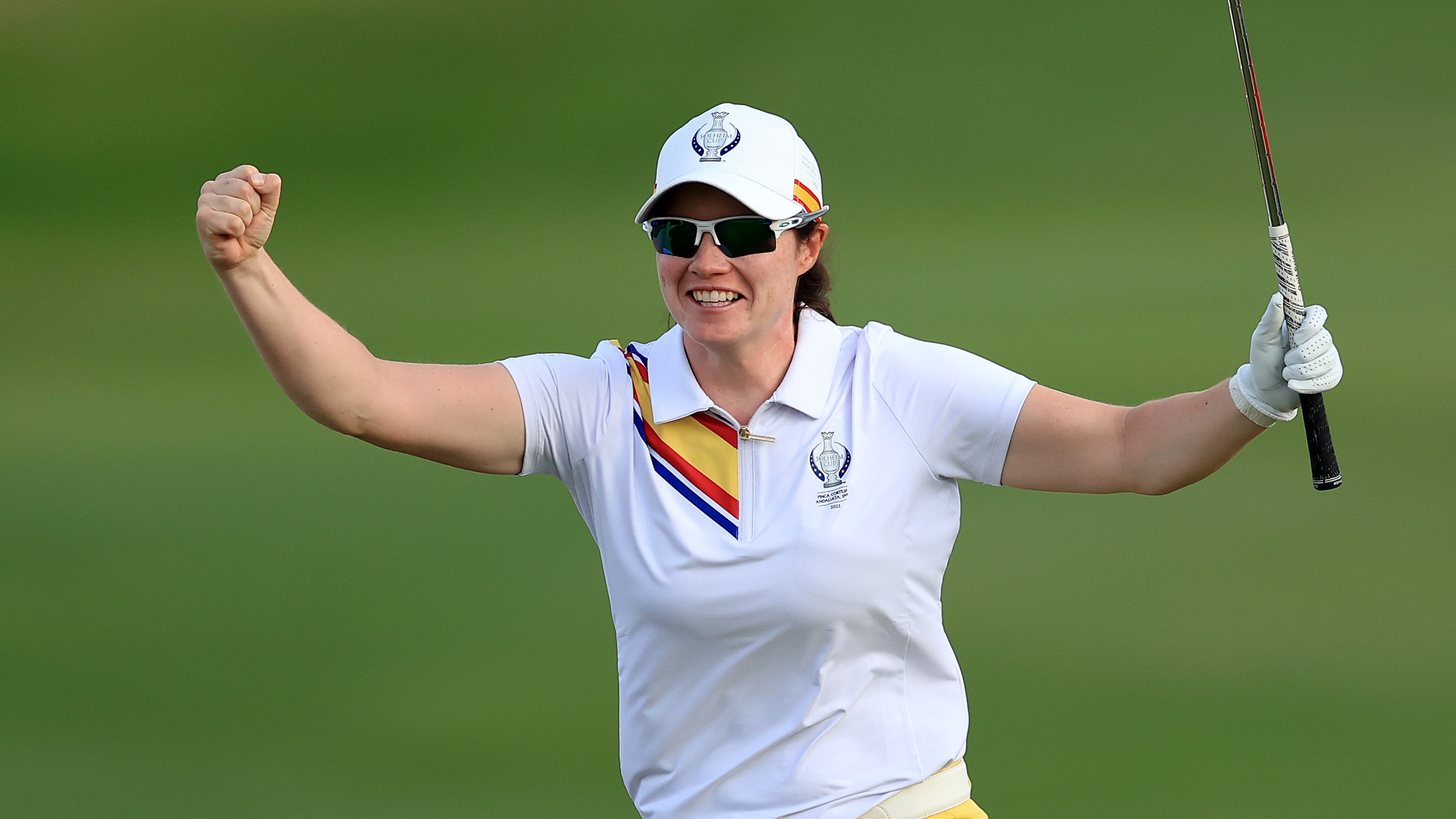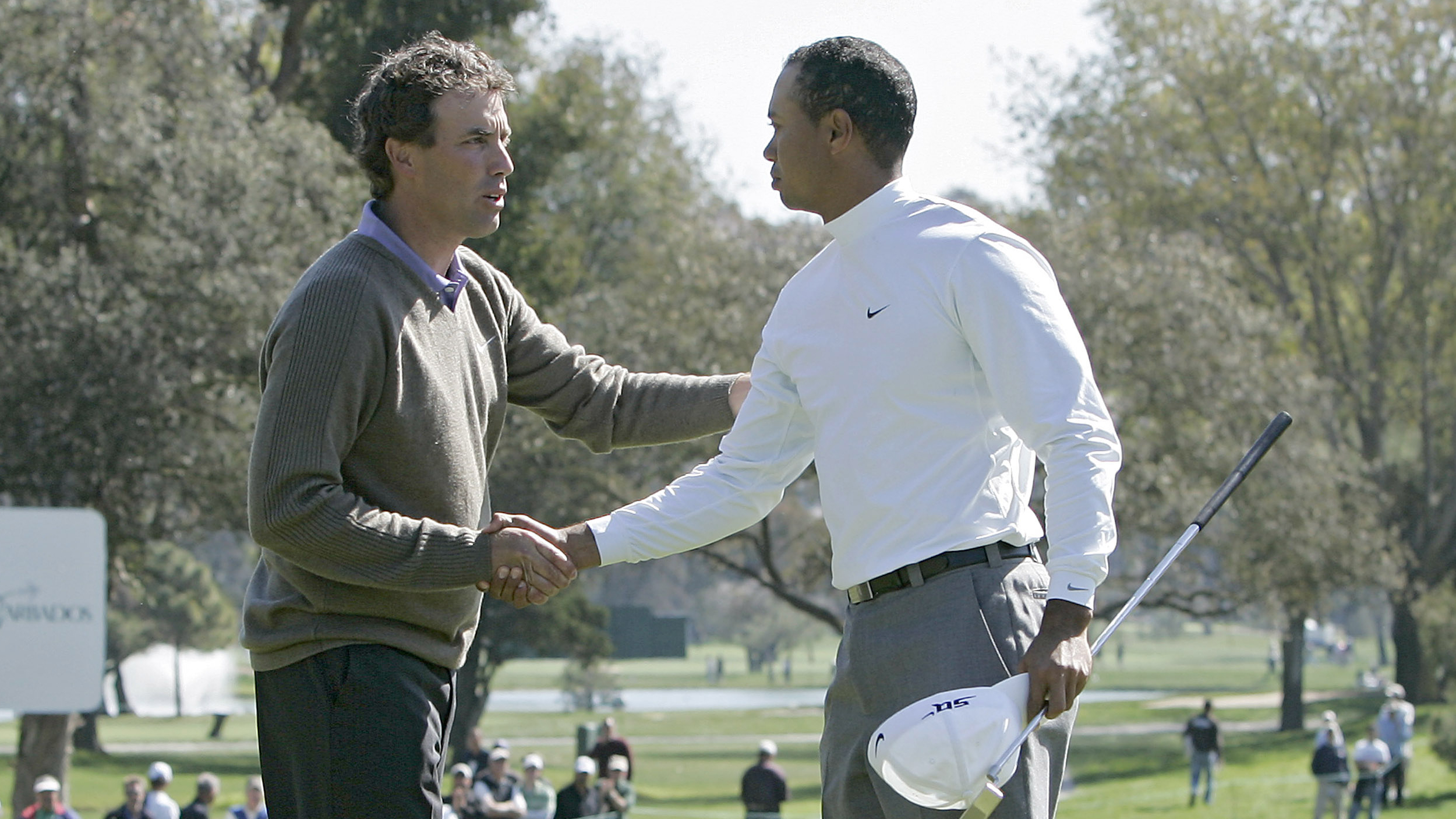What Is Match Play?
Match play has formed the basis of the Ryder Cup since its creation in 1927 and the Solheim Cup since 1990, but what exactly is it?

Mike Hall

Avid golf fans will be familiar with the match play format, but with most tournaments centred around stroke play, it may not be so recognisable to more casual fans watching the Solheim Cup and Ryder Cup. So, what exactly is match play?
The format is used at every Ryder Cup, Solheim Cup and Presidents Cup as well other notable matches and tournaments, including the Amateur Championship, US Amateur Championship, Curtis Cup and Walker Cup.
The format pits one player or team against another. That differs from stroke play, which sees players attempting to master the course with the lowest score they can achieve.
In match play, competitors attempt to beat each other to the best score on each hole, with the player with the lowest score winning the hole to go 1up.
The aim of the game is to win as many holes as you can in that manner until there are no longer enough holes for the opponent to come back.
For example, in an 18-hole match play contest, the highest score you can win by is 10&8, which means the winner would be 10up with only eight holes left in the round.
Tiger Woods famously nearly achieved that feat at the 2006 WGC-Match Play, when he took on Stephen Ames and beat him 9&8.
Subscribe to the Golf Monthly newsletter to stay up to date with all the latest tour news, equipment news, reviews, head-to-heads and buyer’s guides from our team of experienced experts.

Tiger Woods beat Stephen Ames 9&8 at the 2006 WGC-Match Play
At the Solheim Cup and Ryder Cup you may also see the letters AS on the leaderboards. That means the match is All Square - neither player has won more holes than the other. The word 'Tied' has become more common, too.
Match play can also take several forms, and that is true of both the Ryder Cup and Solheim Cup, which each feature match play split into three sections - four balls, foursomes, and singles.
Singles is perhaps the most easy to understand for the casual fan as it pits one player against another, with the player with the lowest score winning each hole.
Four balls is similar, but it features two pairs of players, with the lowest score winning the hole. Finally, foursomes features two pairs of players, but they play one ball and it is alternate shot.
Due to the nature of match play, it has created some incredible moments and intense pressure and yet it is rarely used on the DP World Tour, PGA Tour or LPGA Tour because the final would only be between two players and TV networks and tournament organizers tend to want all of the best players there every day.
The WGC-Match Play no longer exists, with only the LPGA Tour currently featuring a match play event.
However, if anything, that merely adds to the appeal of match play when it does come around, as fans get to watch a format of the game that can produce a wholly different dynamic, atmosphere and outcome to that which they experience on a more regular basis.
Match Play is also very commonly played at amateur and recreational level.

Sam is Golf Monthly's Senior E-commerce Editor which mean's he oversees everything E-com related on the site.
This takes the form of creating and updating Buying Guides, reviews, and finding bargain prices for deals content.
Working with golf gear and equipment over the last seven years, Sam has quickly built outstanding knowledge and expertise on golf products ranging from drivers, to balls, to shoes.
He combines this knowledge with a passion for helping golfers get the best gear for them, and as such Sam manages a team of writers that look to deliver the most accurate, insightful, and informative reviews and buying advice. This is so the reader can find exactly what they are looking for, at a good price.
Additionally Sam oversees Golf Monthly voucher/coupon content which seeks to find you the best offers and promotions from well-known brands like Callaway, TaylorMade and many more.
Unfortunately, Sam is not a member of any club at the moment but regularly gets out on the golf course to keep up the facade of having a single-figure handicap.
- Mike HallNews Writer